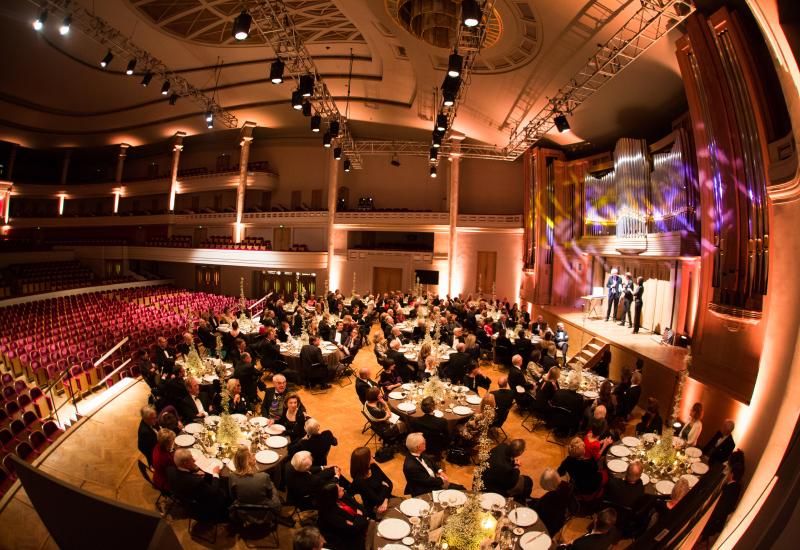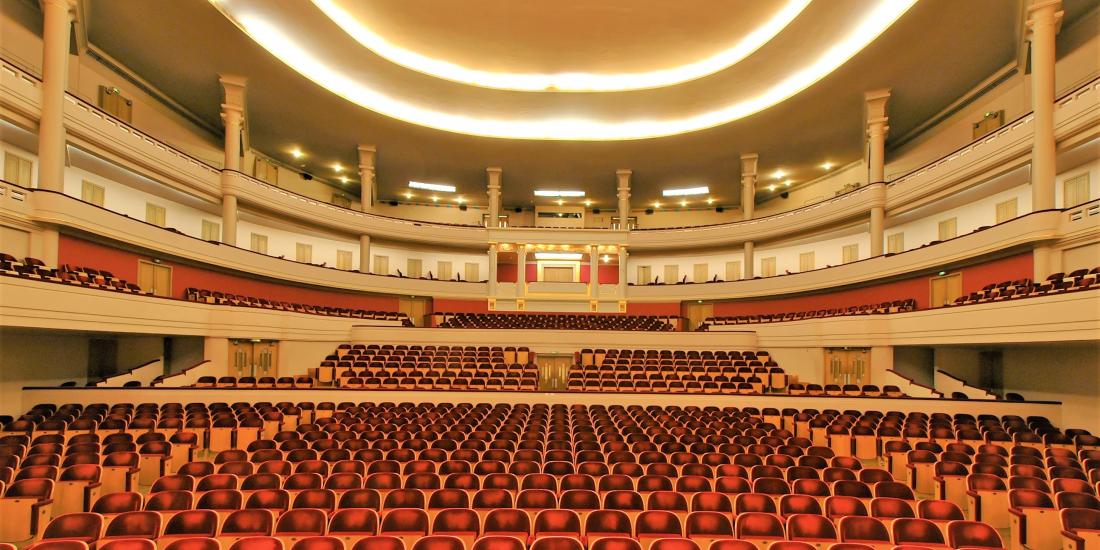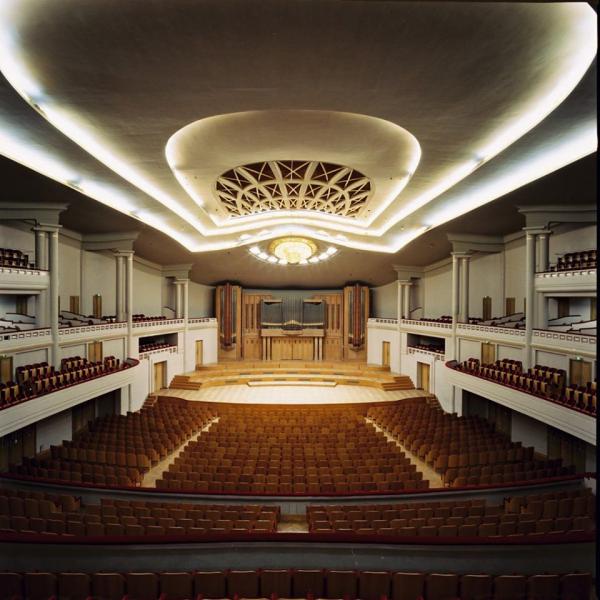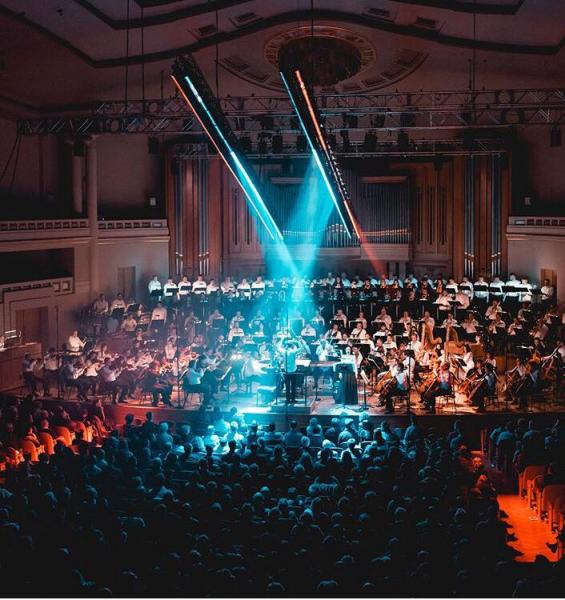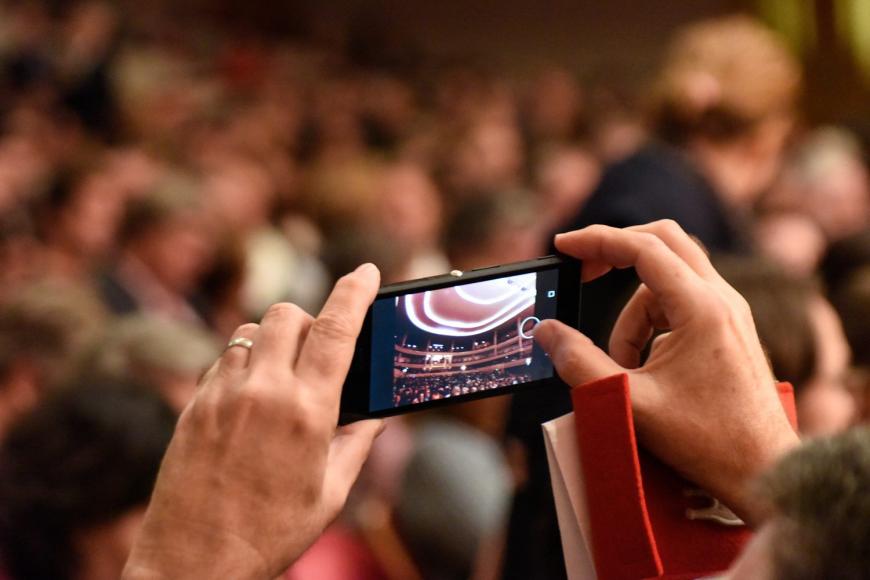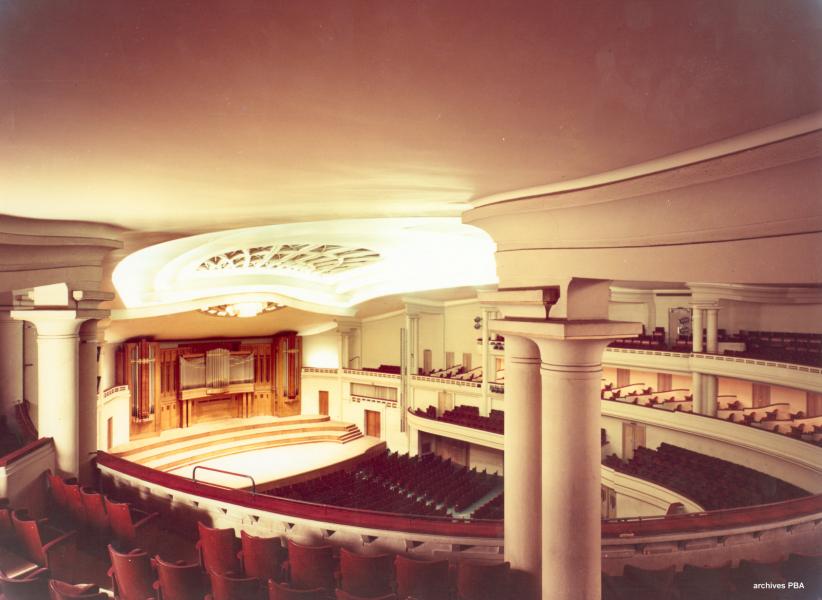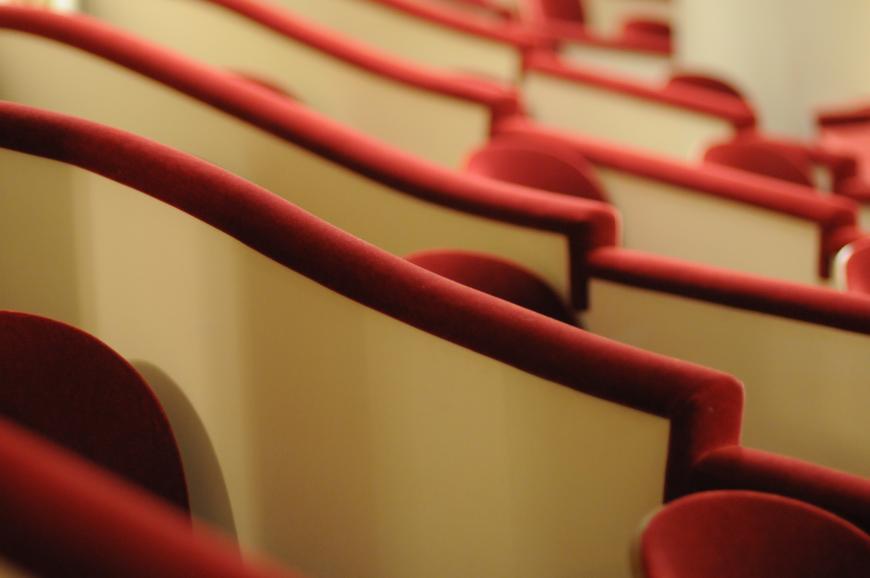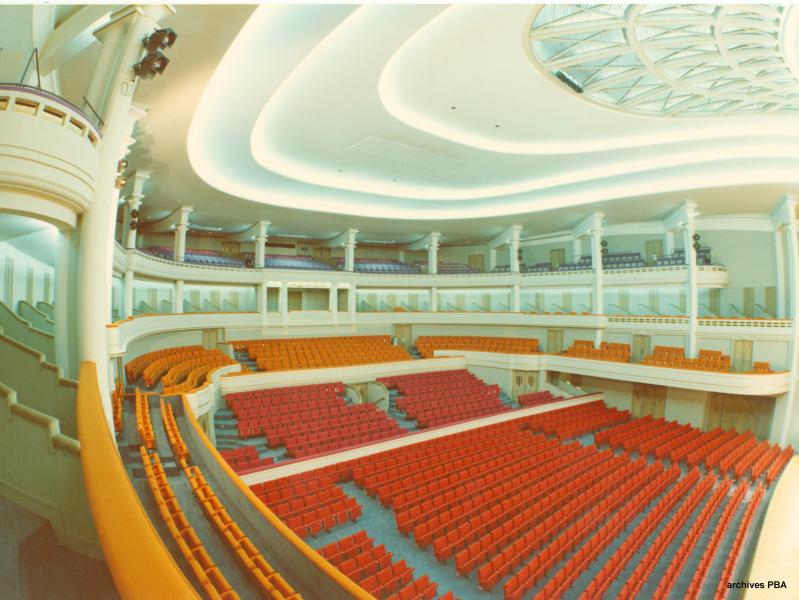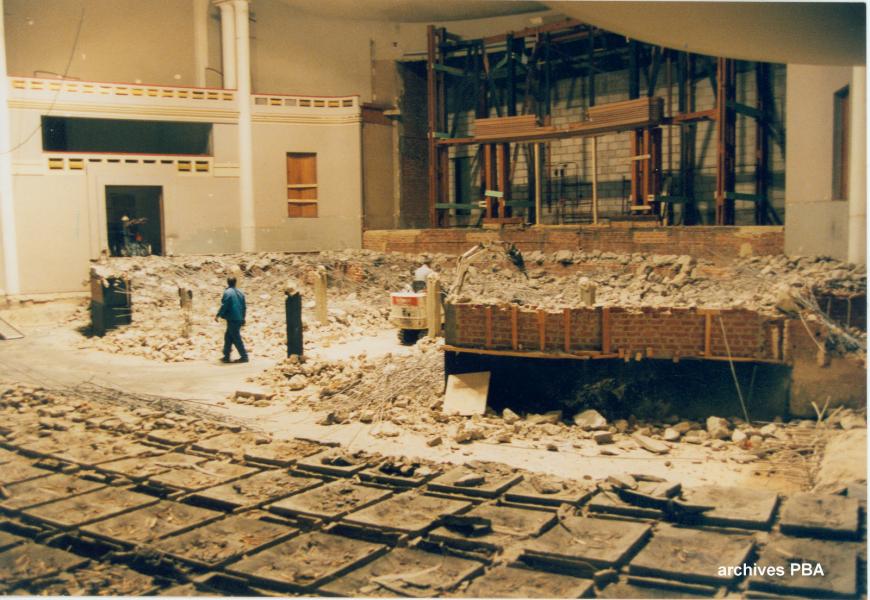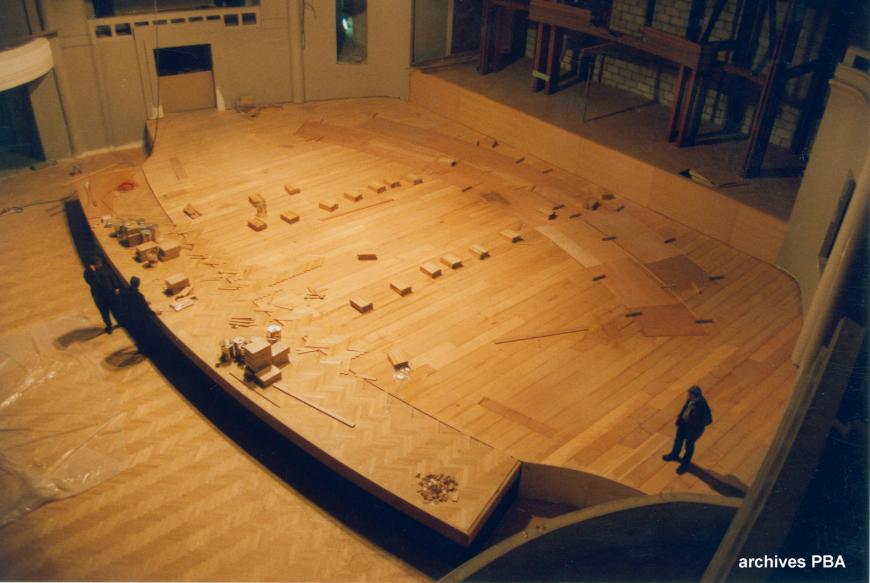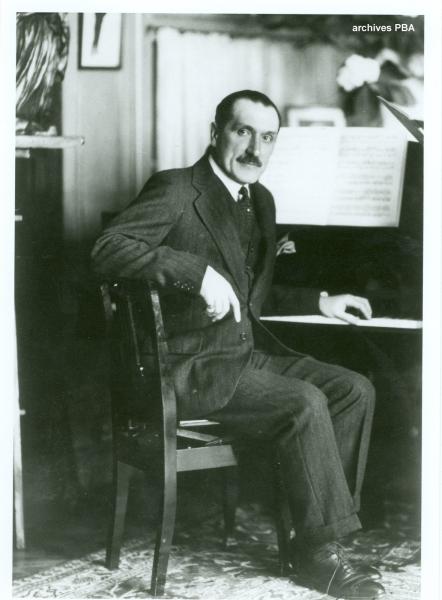Who, when entering the Great Hall, has failed to raise their eyes to the ceiling to sense the expansiveness offered by such a space? Who has not been struck by the charming harmony of the scarlet velvet seats, the parquet floor, the white of the bare colonnades and the occasional gilding? Between the shimmering and the sober, each element in this hall was carefully considered by its designer, the Belgian architect Victor Horta – star of Art Nouveau who later evolved towards Art Deco – to create in the public a sense of well-being and of delight.
A Symphony for the Eyes, a Performance for the Ears
Although it was Victor Horta alone who designed the Main Hall, he was nevertheless required to meet a number of demands. Eugène Ysaye, the famous violin virtuoso, wanted performers to feel that they were surrounded by their audience. The hall also needed to offer a significant capacity (2,150 seats) while ensuring an optimal listening experience. Henry Le Boeuf corresponded at length with Horta to guarantee the quality of the acoustics and lighting, as well as the comfort of the seats and their spacing.
"Our hall is sufficiently large and I want everyone to feel comfortable."
The nature of the material used, namely reinforced concrete, caused Horta to opt for an ‘egg’ shape that would lend both charm and distinctiveness to the hall. It was a material that was inexpensive, generated little waste and could be quickly delivered – unlike the steel that was initially planned. "The quality of the acoustics stems in large part from the use of the materials," Horta acknowledged in his Memoirs.
A Flattering Sound for the Violins
The acoustics of the Main Hall have evolved over time. Initially, they were distinctive for enhancing the sound of the strings. This was in deference to the dominant musical tastes of the time, Belgium being renowned for its violin school. Studies carried out in 1945 and 1960 placed the hall's acoustics on a par with those of the Vienna Musikverein, the Amsterdam Concertgebouw and the Boston Symphony Hall.
Before embarking on the project, Horta had studied the acoustics of both the Concertgebouw and the Palais Garnier opera house in Paris. He also drew inspiration from the Mormon Hall in Salt Lake City, whose acoustics he had the opportunity to appreciate during his exile in the United States during the First World War. Conductor Arturo Toscanini, who performed at the Centre for Fine Arts with the New York Philharmonic in 1930 and 1934, is quoted as saying after one of his concerts that: "It is here that I heard myself for the first time."
In Quest of an Ideal
Following the 1967 fire in the hall, it was decided, for safety reasons, to do away with the wooden stage, which Horta credited with the function of sound box, and replace it with a concrete stage. This, together with the replacement of the seats and the fitting of a carpet, considerably reduced the acoustic quality of the hall.
Successive waves of restoration works from the 1990s until 2017 sought to recapture the original acoustics. The concrete stage was removed, the carpet made way for a wooden parquet floor, the seats were replaced, and the doors were modified to improve the soundproofing. In 2000, Pierre Boulez paid tribute to the success of the first restoration:
"Last spring, I was the guest at the Centre for Fine Arts in Brussels for three concerts with the London Symphony Orchestra. Having already given concerts in this hall prior to this recent renovation, I can testify that the acoustics are now infinitely better than was previously the case. The sound is livelier, more vigorous, you can hear all the instruments better, their balance, their mix and their individual qualities. It is fortunate that this hall, as historic as it is, has thus found a new youth and can serve more effectively the purpose for which it was created: to best serve musical life by means of the appropriate acoustic resources."
Nikolaus Harnoncourt, for his part, paid tribute to the "marvellous, clear, transparent" sonority of the hall, considering it to be "one of the best concert halls in Europe in terms of the acoustics."
Memories in their Thousands
From its inauguration until today, the Henry Le Bœuf Hall has welcomed countless illustrious productions. The jazz sounds of Cab Calloway and of Louis Armstrong have filled its space, as have the feverish chords of Django Reinhardt and the sublime voice of Billie Holiday. The greatest conductors, such as Kleiber, Karajan and Abbado, have conducted acclaimed orchestras there. Not to forget solo artists such as Ravi Shankar, Papa Wemba, Montserrat Figueras, Marianne Faithfull, Yehudi Menuhin, Ivry Gitlis and Daniel Barenboim, who performed there at the age of just 13! The Queen Elisabeth Competition, the Jeunesses Musicales, the BIFFF, Balkan Trafik!, the Nuits Sonores… How to honour the memory of such a venue without relegating to the shadows so many lasting memories?
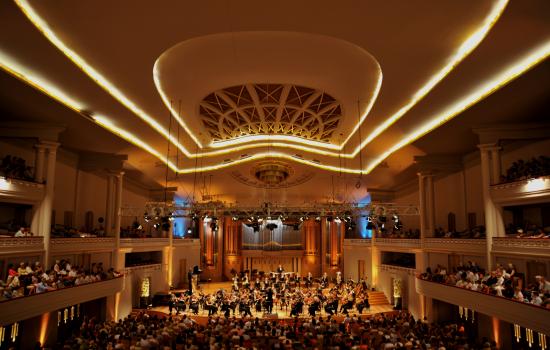
Henry Le Boeuf Hall
Prestigious and unique. Stars such as Cecilia Bartoli and Nick Cave are on stage there.
Book the Henry Le Boeuf Hall
Prestigious and unique. Stars such as Cecilia Bartoli and Nick Cave are on stage there.
